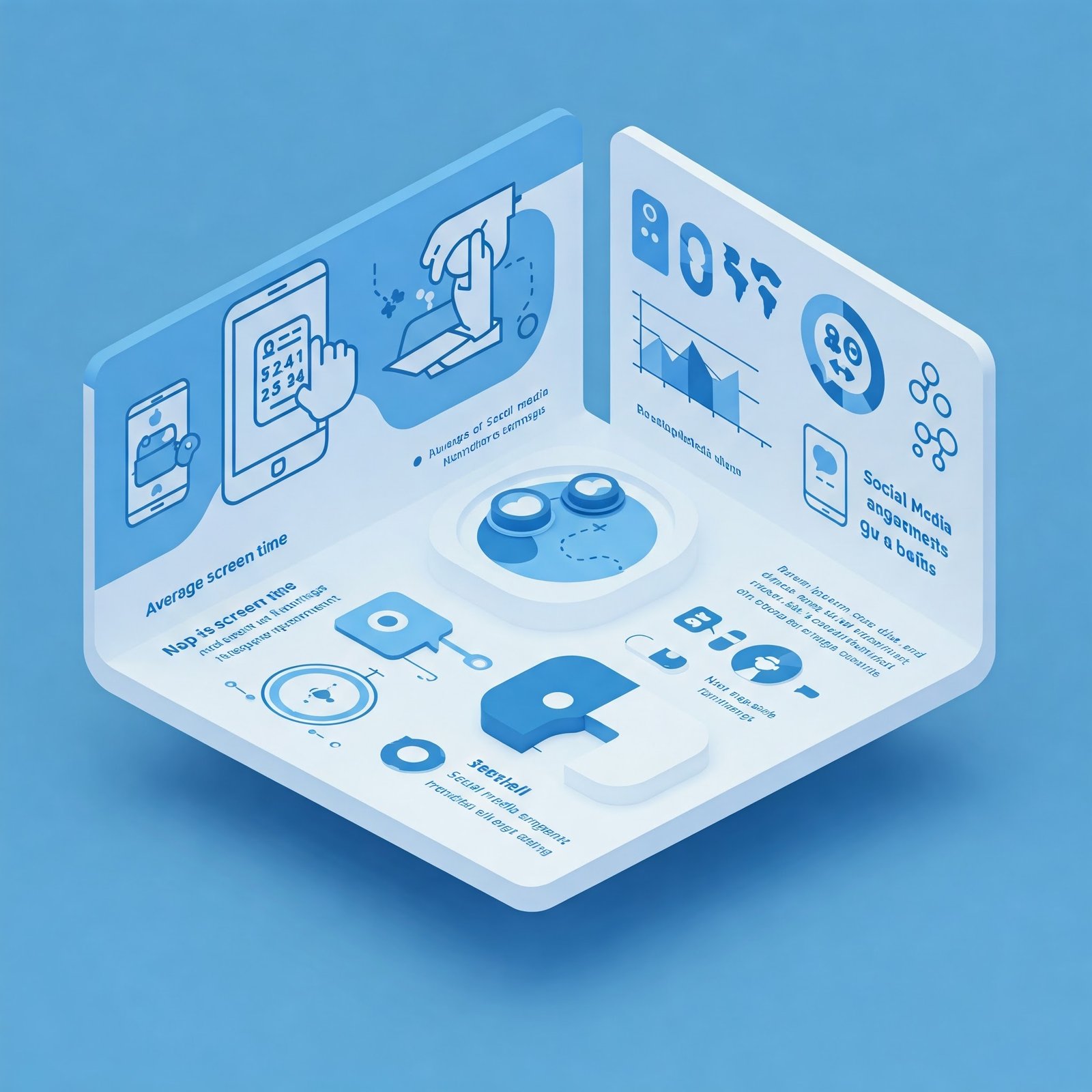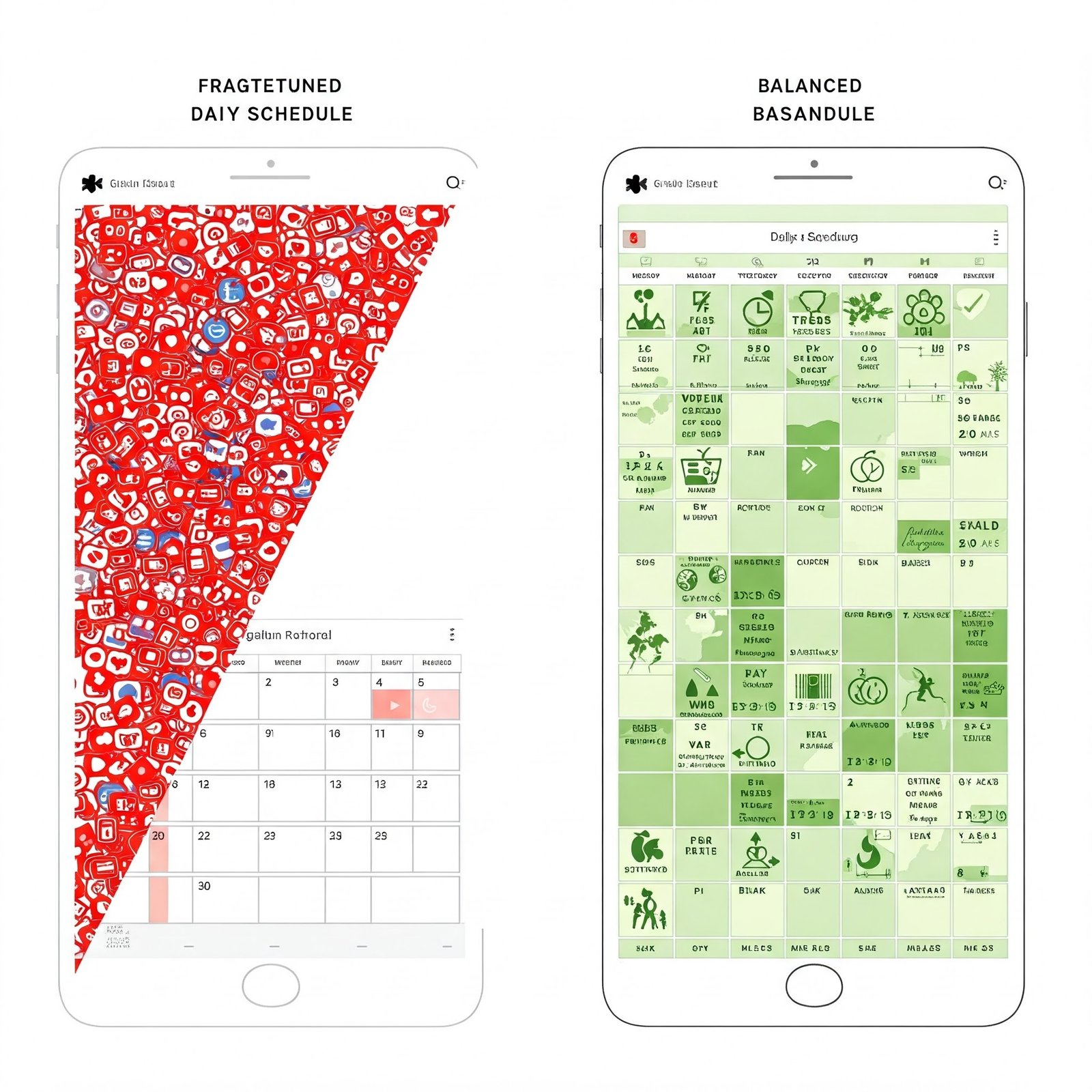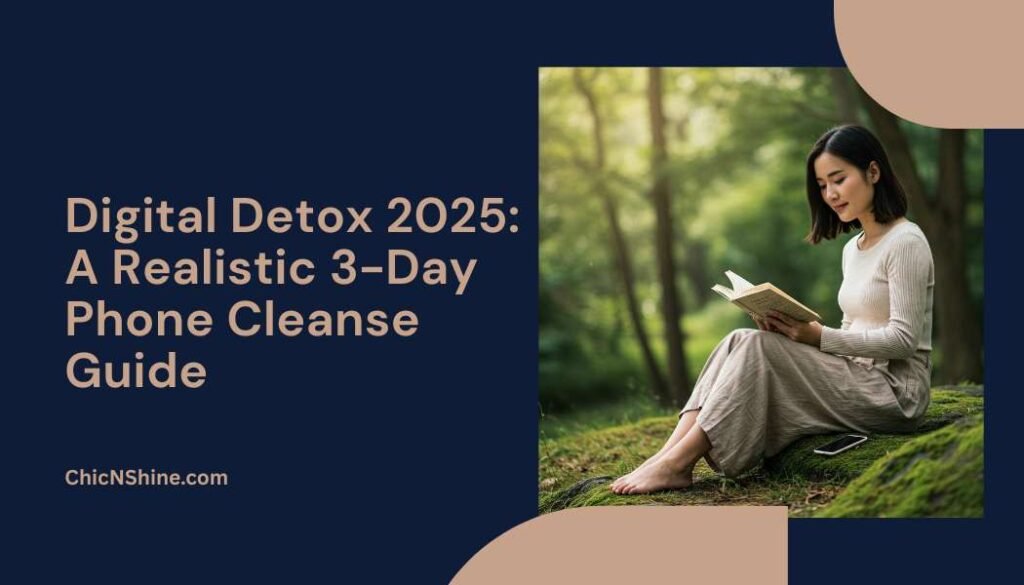Why I Finally Decided to Unplug
Last month, I caught myself mindlessly scrolling through social media at 2 AM—for the third night in a row. My eyes were burning, my neck ached, and I couldn’t recall a single meaningful thing I had seen in the past hour. That moment was a wake-up call: it wasn’t just about cutting back on screen time—it was about committing to a phone detox in 2025. This isn’t a casual resolution; it’s a structured, intentional approach to reclaiming my focus, well-being, and mental clarity in an always-online world.
In 2025, we’re more digitally immersed than ever before. The average person now spends nearly 7.5 hours on screens daily, and many of us are feeling the consequences. As someone who’s recently gone through a transformative digital detox experience, I want to share why disconnecting has become essential and how you can successfully implement your own detox plan.
The Urgent Need for Digital Detox in 2025
The digital landscape has evolved dramatically. With AI-powered content tailored to keep us engaged, immersive VR experiences becoming mainstream, and workplaces increasingly expecting 24/7 availability, our attention is being pulled in countless directions. This constant digital stimulation comes with real costs to our mental health, productivity, and relationships.
When I began researching for my own digital detox, I discovered some startling statistics:
- Attention spans have decreased by 25% in the past decade
- 68% of people report feeling anxiety when separated from their phones
- Screen time before bed reduces sleep quality by up to 40%
- Rates of digital burnout have doubled since 2020
These numbers aren’t just statistics – they represent a collective struggle that I was experiencing firsthand. My productivity was suffering, my anxiety was increasing, and most concerning, I was losing the ability to be fully present in my own life.
My Digital Detox Journey: What Actually Worked
After experimenting with various approaches, I developed a practical framework that helped me regain control without completely disconnecting from the digital world. Here’s my step-by-step approach:

1. Assessment: Understanding My Digital Habits
Before making changes, I tracked my screen time for a week. I used apps like Digital Wellbeing Tracker to understand not just how much time I spent online, but which apps and activities were consuming most of my attention.
This revealed some surprising patterns – I was spending nearly three hours daily on social media, often in short bursts throughout the day, that fragmented my attention and left me feeling scattered.
2. Creating Tech-Free Zones and Times
I designated specific areas in my home as tech-free sanctuaries. My bedroom became a no-phone zone, and I purchased an Analog Alarm Clock to replace my phone’s alarm function.
I also established tech-free times: The first hour after waking up and the last hour before going to bed. During these periods, I focused on mindfulness practices, reading physical books, or simply enjoying the quiet moments without digital distractions.
3. Implementing the 3-Day Digital Detox Challenge
For my initial detox, I committed to a 3-day weekend of minimal technology use. This wasn’t about eliminating all digital interactions but rather about being intentional with my usage. I set these rules:
- No social media
- Email checks are limited to once daily
- Phones are allowed only for calls and essential communications
- No streaming services
- No news or content consumption apps
This short but concentrated break helped reset my relationship with technology. By Monday morning, I felt more clearheaded and present than I had in months.
4. Building Sustainable Digital Habits
Following the initial detox, I focused on building lasting habits rather than temporary restrictions. These included:
- Using a Focus Timer for dedicated work periods
- Turning off non-essential notifications
- Implementing a “one screen at a time” rule
- Scheduling specific times for email and social media
- Weekly digital decluttering sessions to unsubscribe and unfollow
5. Finding Meaningful Offline Alternatives
The most sustainable digital detox isn’t about what you’re giving up – it’s about what you’re gaining. I rediscovered activities that brought me genuine joy and fulfillment:
- Nature walks without my phone
- In-person social gatherings
- Physical books (I’ve read 15 since starting my detox!)
- Hobbies that engage my hands: gardening, cooking, painting
By replacing mindless scrolling with these activities, I found that I rarely missed the digital distractions that had previously consumed so much of my time.
The Unexpected Benefits of My Digital Detox
When I began this journey, I expected to feel less distracted and perhaps sleep better. What I didn’t anticipate were the profound changes that extended into every area of my life:

| Expected Benefit | Unexpected Bonus | Real-Life Impact | Pro Tip to Maintain |
|---|---|---|---|
| Less distraction | Improved mental clarity | Complex problems became manageable | Start mornings with 30 min screen-free |
| Better sleep | Deeper, longer sleep (2+ extra hours) | Woke up refreshed naturally | Keep phones outside bedroom |
| – | Reduced anxiety levels | Less social comparison = more contentment | Curate news intake to 10 min/day |
| – | Enhanced creativity | Journaling returned, solved work challenges | Weekly “analog brainstorming” sessions |
| – | Stronger relationships | Friends noticed increased presence | Meal times = device-free zones |
Key Insights:
💡 The deepest benefits were the unanticipated ones
💡 Effects compound over time (Week 1 vs. Month 3)
💡 Small boundaries create big life upgrades
Maintenance Checklist:
☑️ Weekly “slow tech” hours (no notifications)
☑️ Physical alarm clock to avoid phone bedtime use
☑️ Scheduled social media windows (vs. all-day access)
How to Customize Your Digital Detox for 2025
While my approach worked for me, the most effective digital detox will be tailored to your specific needs and circumstances. Here are some considerations:
Professional requirements: If your job requires digital connectivity, focus on establishing clear boundaries rather than complete disconnection. It is advisable to use separate devices for work and personal use.
Family dynamics: Involve your household in the detox process. Children especially benefit from seeing healthy technology habits modeled.
Gradual vs. cold turkey: Some people thrive with abrupt changes, while others do better with gradual reductions. Be honest about which approach will be sustainable for you.
Tech tools for detoxing: Ironically, some technology can help you disconnect. I found the Screen Time Management System invaluable for setting limits and tracking progress.
Common Challenges and How I Overcame Them
FOMO (Fear of Missing Out): I realized most of what I was “missing” wasn’t impacting my life in meaningful ways. For truly important updates, I relied on direct communication with friends and family.
Work expectations: I had an honest conversation with my team about response times and established clear emergency protocols.
Habit triggers: I identified specific emotional triggers (boredom, stress, loneliness) that led to mindless scrolling and developed alternative responses.
Relapse periods: When I found myself slipping back into old patterns, I didn’t view it as failure but as data about what wasn’t working in my approach.
The Future of Digital Wellness
As we move further into 2025, the conversation around digital detox is evolving. It’s no longer just about disconnecting – it’s about creating a sustainable relationship with technology that enhances rather than diminishes our lives.
I believe the next frontier isn’t digital abstinence but digital intentionality – using technology as a tool rather than being used by it. This might mean embracing certain technologies that align with our values while setting clear boundaries around those that don’t.
The goal isn’t to return to a pre-digital age but to move forward with greater awareness and purpose in how we engage with the digital world.
My Weekly Digital Detox Maintenance Plan
To maintain the benefits of my digital detox, I’ve implemented this weekly routine:

Sunday planning: I review the upcoming week and identify potential digital pressure points, planning accordingly.
Wednesday check-in: I assess how my digital habits are affecting my mood and productivity and make adjustments as needed.
Monthly tech-free day: One full day each month where I completely disconnect from all screens.
This maintenance plan has helped me sustain the benefits of my initial detox without feeling deprived or disconnected from the digital world.
Final Thoughts: Finding Your Digital Balance

Digital detox isn’t about perfection – it’s about progress. Some weeks I’m more successful than others in maintaining my boundaries, but the awareness I’ve developed has permanently changed my relationship with technology.
If you’re feeling overwhelmed by your digital life, It’s important to understand that even small changes can result in substantial improvements. Start with one boundary or one tech-free period and build from there. The goal isn’t to eliminate technology but to put it in its proper place – as a tool that serves your life rather than dictates it.
I’d love to hear about your own digital detox experiences or answer any questions you might have about implementing these strategies in your life. Share your thoughts in the comments below!
FAQs
How long should a digital detox last?
I've found that even a 24-hour detox can provide benefits, but 3-7 days seems to be the sweet spot for most people to experience significant changes in attention and mood. For sustainable results, follow your initial detox with ongoing healthy digital habits.
Will I miss important information during a digital detox?
This was one of my biggest concerns! I addressed it by letting key people know I would be less responsive, setting up emergency contact protocols, and scheduling specific check-in times. I discovered that truly urgent matters were rare, and most things could wait.
Can I do a digital detox if my job requires me to be online?
Absolutely! Professional requirements don't preclude a modified digital detox. Focus on eliminating non-essential digital activities, establishing work/personal boundaries, and creating tech-free zones in your home and schedule. Even small reductions in unnecessary screen time can yield significant benefits.
What if I feel anxious or uncomfortable during my digital detox?
This discomfort is normal and actually valuable! It reveals our dependency on digital stimulation. When I felt this way, I used it as an opportunity to observe the feeling without judgment and explore what was beneath it. Often, the anxiety passes within 24-48 hours as your brain adjusts to less constant stimulation.


